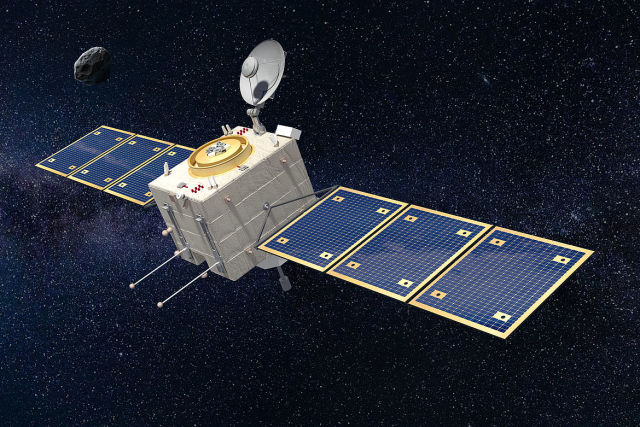The European Space Agency (ESA) has approved the creation of three spacecraft for the Comet Interceptor project. They will be launched into space in 2029 and will go to the second Lagrange point in the Sun—Earth system. There, the probes will be waiting for their target — a comet from the outer region of the Solar system or an interstellar object, it is reported on the agency's website.
Studies of comet nuclei using spacecraft are important from the point of view of understanding the mechanisms of formation and evolution of such bodies, their structure, ensuring the planetary safety of the Earth from potentially dangerous celestial bodies, as well as establishing the role of comets in the origin of life on the young Earth. The first meeting of an interplanetary probe and a comet occurred in 1985, when ISEE-3 flew through the tail of a comet [...] Giacobini —Zinner, and then the European apparatus "Giotto" and the Soviet stations of the series Vega flew past Halley's comet. In total, the automatic devices have managed to visit eight comets to date, the last major research program was Rosetta, in which a lander was first landed on the surface of the core of comet Churyumov—Gerasimenko.
The Comet Interceptor project was proposed in 2018 as part of the Cosmic Vision program and selected for implementation by the European Space Agency in 2019. It belongs to the category of "fast" projects, which are characterized by a launch vehicle mass of no more than a ton, launch as a passing payload of a launch vehicle and a relatively short development time.
On June 8, 2022, ESA announced that it had completed the evaluation phase of the project, selected contractors and moved it into the spacecraft design and assembly phase. In total, three research probes will be created, two of them (under the designations A and B2) will be built by ESA, and B1 — by the Japanese Aerospace Agency (JAXA).
The main probe A will carry a multispectral camera, a neutral mass analyzer, an infrared sensor and an instrument for studying magnetic fields and dust in the comet's coma. The probe B1 will have an ultraviolet camera, a device for studying the plasma medium and an optical wide-angle camera. The B2 probe will be equipped with a camera operating in the optical and near infrared wavelengths, a comet coma cartographer and a second set of sensors to study the plasma environment, magnetic field and dust in the coma.
It is expected that the probes will be launched into space in 2029 together with the Ariel space Telescope, after which they will head to the second Lagrange point in the Sun—Earth system. There, the Comet Interceptor will be waiting for its target, which may be a long-period comet that arrived from the outer part of the Solar System, or an interstellar object that flew into it from the outside. Having found the target, the probes will head towards it and will comprehensively study the comet's nucleus, coma and tail from different points.
Earlier we talked about the new results of observations of the mysterious huge comet Bernardinelli — Bernstein, which flies to the Sun from the Oort cloud and will pass the next perihelion in 2031.
Alexander Voityuk

